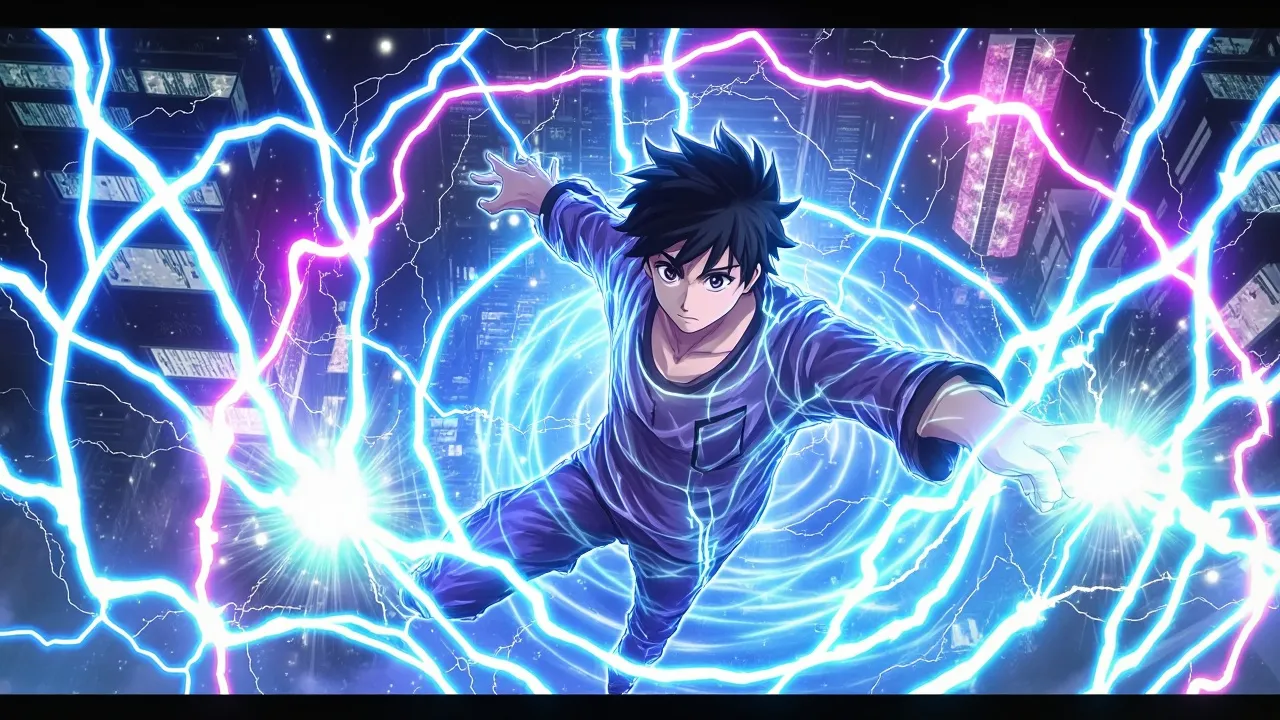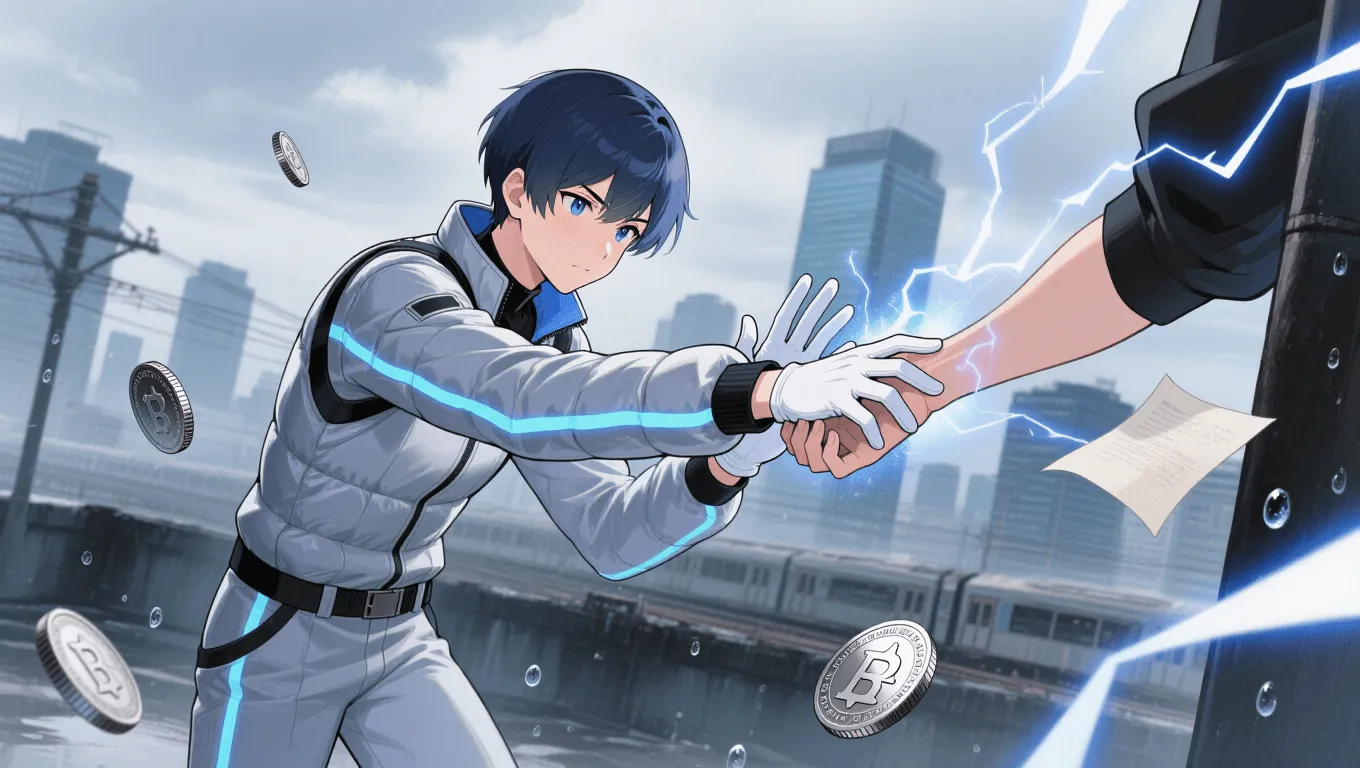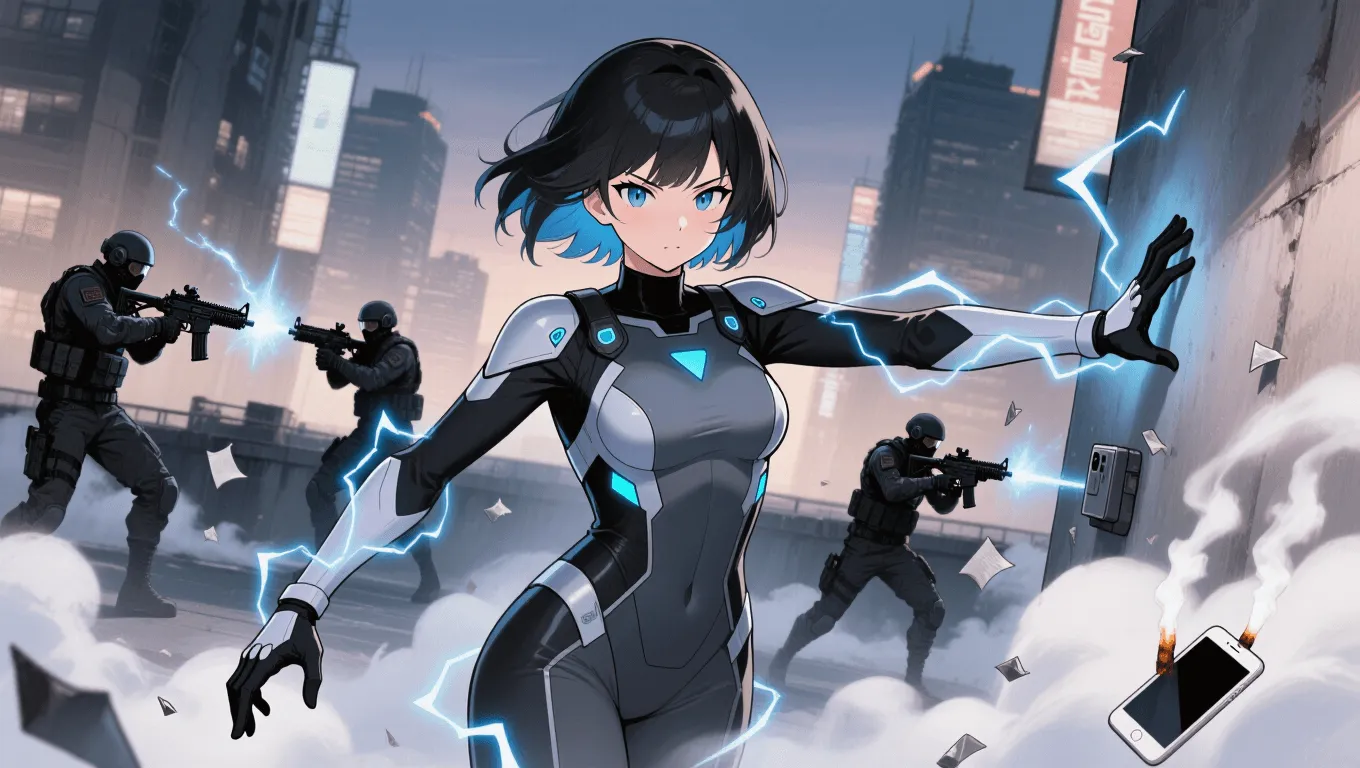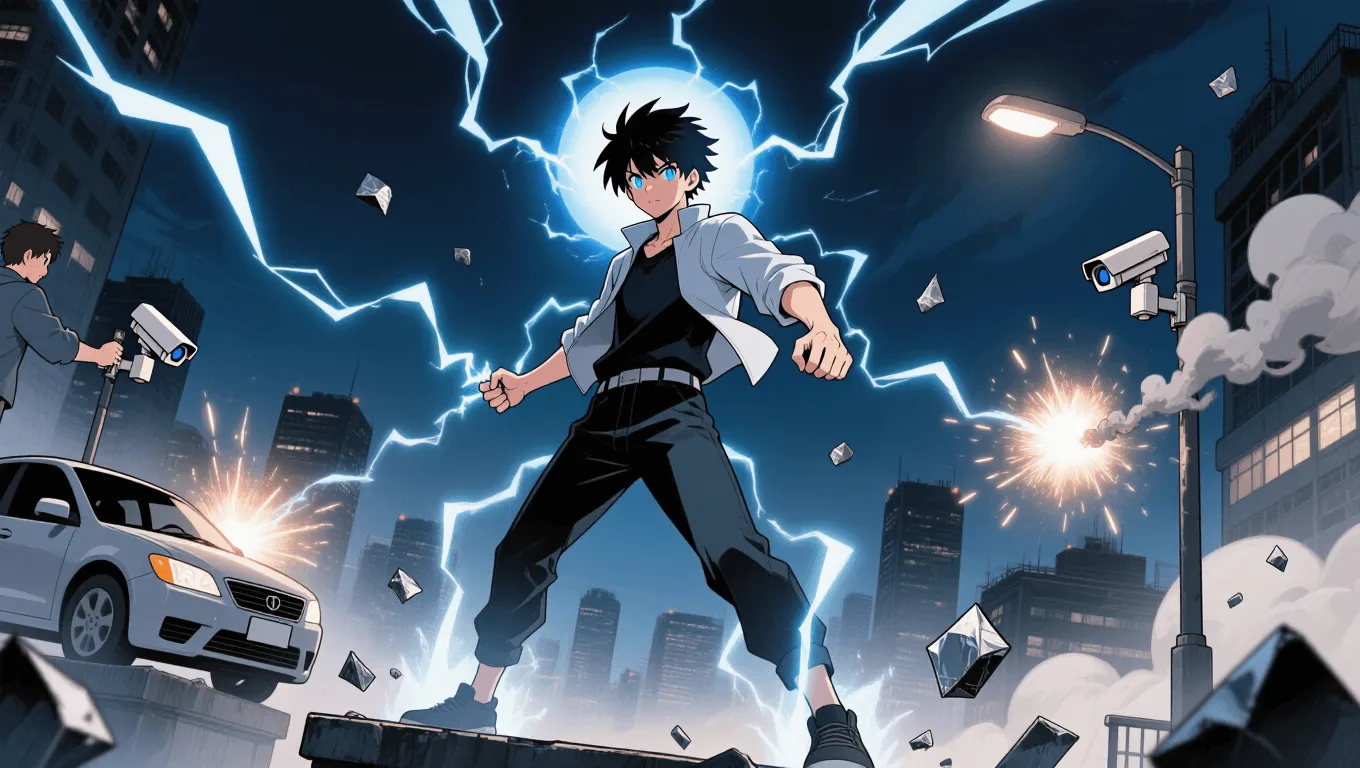Static Charge

Static Charge Video Demo 🎬
Table of Contents
Static Charge is the superpower of generating, storing, and controlling electrostatic energy—better known as static electricity—and releasing it on command. In fiction, the user builds an electrostatic field on their body or in nearby materials, then unleashes that potential as shocks, arcs, or adhesive effects. Unlike broad electrokinesis, Static Charge emphasizes high-voltage, short-burst discharges and clever manipulation of charged surfaces and fields.
To explore related abilities and variants, browse the evolving entries in the superpower wiki. Want inspiration for your next character? Try the random superpower generator and roll for an unexpected combo.
What Is Static Charge
Static Charge revolves around the accumulation of electric potential in insulated bodies and the differential between positively and negatively charged regions. In real-world terms, it draws on the triboelectric effect (charge gained through friction), capacitive storage (holding energy like a living capacitor), and controlled discharge (sparks, arcs, and zaps). In a power-set context, the user can:
-
Accumulate charge in themselves, their gear, or the environment.
-
Polarize objects—making one side positive and the other negative—to induce attraction, repulsion, or adhesion.
-
Trigger precise electrostatic discharges that stun, scorch, or scramble delicate electronics (ESD).
This superpower differs from classical lightning manipulation by focusing on short-range, momentary pulses rather than sustained current. It plays like a tactical toolkit: subtle, stealthy, and extraordinarily useful in urban or indoor arenas full of plastics, textiles, and electronics.
Core Abilities of Static Charge
Electrostatic Accumulation
Users draw charge from friction (clothing, air currents, sand or dust), environmental field lines, or by “pumping” electrons through micro-motions. Skilled users become walking Van de Graaff generators, their hair lifting and tiny sparks crawling across skin-tight fabric.
Keywords: triboelectric effect, electrostatic build-up, charge manipulation.
Capacitive Discharge (Stun and Arc)
By momentarily bridging their stored potential to a grounded target, the user unleashes a taser-like burst. At close range, this causes muscular lock, pain compliance, or short-lived paralysis. With more power, the arc can jump gaps, leaving scorch marks, pitting, and minor burns.
Keywords: electric shock, taser burst, ESD arc, capacitor discharge.
Polarization & Adhesion
Charging surfaces lets the user stick to walls, make tools cling to palms, or cause loose gear to “snap” into place. Opposite polarization can repel dust and droplets, creating a clean “static veil” for sensors or optics.
Keywords: static adhesion, surface polarization, electrostatic grip.
Fine-Object Levitation and Guidance
Small, lightweight items—paper shreds, metal filings, ash, or confetti—dance in electric fields. With practice, the user corrals these into decoys, smokescreens, or razor-dust streams (when combined with conductive particulates).
Keywords: electrostatic levitation, charged particulates, field shaping.
Charge Sense (Electrostatic Perception)
Subtle changes in local fields betray movement, hidden cables, or live devices. The user gains a sixth sense for electrified surfaces, anti-static treatments, and even cloaked electronics when they leak irregular field signatures.
Keywords: electroreception, field detection, charge radar.
Electronics Interference
Fast ESD pulses can crash unsecured microelectronics, scramble unshielded sensors, or corrupt volatile memory. While not a full EMP, repeated pulses degrade delicate circuits and sabotage gadgets during infiltration.
Keywords: electrostatic discharge, device scrambling, soft kill.
Static Shielding and Redirect
Brief halos of charge can deflect incoming arcs, dissipate stun weapons, and reduce the bite of conductive snares. The user reroutes charges along preferred paths—through gloves, rods, or filament mesh.
Keywords: Faraday effects, charge redirection, insulation mastery.
Outfit and Weapon Augmentation
Coils, capacitive gauntlets, or filament-lined cloaks drastically increase storage and control. A metal baton that normally conducts dangerously becomes safe when wrapped in dielectric layers and tuned as a discharge wand.
Keywords: conductive filaments, dielectric armor, charge capacitors.
Application / Tactical Advantages in Combat
Ambush Control: A silent, nearly invisible zap disables a guard without bright flashes. Charged dust clouds also obscure cameras and LIDAR, buying precious seconds.
Crowd and Grapple Management: In melee, quick pulses trigger pain compliance without lasting harm. Opponents wearing wet or conductive gear feel stronger shocks, breaking grabs and clinches.
Mobility and Retention: Adhesion aids wall-running and weapon retention; an opponent trying to disarm the user finds the weapon “magnetically” glued (electrostatically adhered) to the hand.
Counter-Technology: Improvised anti-drone tactics shine: a burst near exposed sensors nudges a UAV off course or crashes unshielded units.
Environmental Control: Dry, dusty arenas become power amplifiers. Sand, ash, or synthetic fabrics generate charge quickly and hold it for devastating arcs and particle manipulation.
Stealth: No thunderclaps, no bright bolts—just the faint crackle of air and the smell of ozone. Static Charge excels where subtlety matters.
Level: Level 1 🏙️, Level 2 🌇, Level 3 🌃
Level 1 — Spark Initiate
-
Can build mild charge via friction or breath control.
-
Delivers palm-to-skin zaps that startle or briefly numb small muscle groups.
-
Sticks lightweight objects to surfaces and senses hot wires at arm’s length.
-
Limited range (touch to a few centimeters), struggles in humid or rainy conditions.
-
Reliant on insulating clothing; barefoot on wet ground kills the effect.

Level 2 — Field Artisan
-
Accumulates enough potential for visible micro-arcs that jump short gaps (a few tens of centimeters).
-
Stuns armed opponents through thin clothing; briefly overloads unshielded smartphones, sensors, and simple locks.
-
Polarizes entire outfits, enabling reliable wall clings and weapon retention.
-
Creates small particle swarms: metal filings or paper chaff form distracting veils and decoys.
-
Partial shielding from stun batons; can channel incoming shocks to ground without full incapacitation.

Level 3 — Stormless Dynamo
-
Stores significant charge with minimal motion; maintains a controlled halo that prickles skin and lifts hair in a radius.
-
Launches precise, multi-point discharges to two or three targets in rapid succession.
-
Disrupts multiple consumer-grade devices at once; forces reboots in unshielded security systems.
-
Sculpted fields levitate and shape conductive dust into cutting ribbons (requires focus and PPE).
-
Builds “static ramparts” that route enemy taser darts around the body; can briefly hover lightweight debris to create moving cover.

Limitations of Using the Static Charge
Humidity Dependency: Moist air bleeds charge away. Rain, mist, or sweat reduce accumulation and cut effective range—classic static’s Achilles’ heel.
Grounding and Conductive Paths: Metal floors, soaked clothing, and grounded cages drain charge before it can build. Bare skin contact with conductive surfaces often discharges energy prematurely.
Not Continuous Power: Static bursts are spiky, not sustained. They hit hard and quick but don’t power engines or provide long-term illumination.
Risk to Allies and Gear: ESD can corrupt friendly tech, trigger flammable vapors, or pit sensitive optics. Allies with pacemakers or implanted electronics require strict safety protocols.
Insulation Management: To avoid backfire, the user must balance insulation and conduction—too much insulator blocks controlled release; too much conductor drains potential to ground.
Focus and Fatigue: Sculpting precise fields—especially with particulate ribbons—demands concentration. Overuse leads to headaches, tremors, and sensory overload from constant field awareness.
Weakness Against What Other Superpowers
Hydrokinesis / Weather (Rain): Moisture neutralizes charge, collapses fields, and grounds premature arcs.
Earth Manipulation / Grounding: Geokinetics can raise conductive spires or encase the user in grounded material, sinking the potential well.
Magnetism / Electromagnetic Domination: Magnetic controllers can tug conductive gear, distort fields, or shunt charge into decoys.
Energy Absorption (Electrical): Absorbers drink the burst and convert it to strength, starving the user of impact.
Cryokinesis (Icy Condensation): Sudden condensation elevates humidity and slicks surfaces, undermining adhesion and charge storage.
Insulation Manipulation: An opponent who can create perfect dielectrics blocks both adhesion and discharge paths.
Vibration / Sonic: Micro-vibrations break adhesion and disperse charged dust clouds, degrading precision.
Synergistic Power Combos
Aerokinesis (Dry Airflow): Dry gusts strip humidity, turbocharging triboelectric build-up and extending arc range.
Super Speed / Friction Mastery: High-velocity movement generates immense static on the fly; hit-and-run zaps become overwhelming.
Sand or Dust Manipulation: Charged grains form living sandpaper or sensor-blind “static fog,” ideal for infiltration and battlefield control.
Textile / Costume Crafting: Filament-weave suits act like wearable capacitors and Faraday-guided paths, enabling surgical discharges.
Technopathy (Shielding Bypass): Insight into circuit layouts helps aim ESD for maximum disruption with minimal collateral.
Illusion or Light Bending: The faint corona and ozone smell cover misdirection; illusions hide the telltale hair-lift moments before a strike.
Tactics with Melee Weapons: Dielectric-wrapped batons, nunchaku with inner capacitors, or short spears that double as discharge wands give reach and safety.
Known Users
-
Static (Virgil Hawkins) — A teen hero whose electromagnetic prowess often includes refined electrostatic tricks and urban gadgetry. Learn more about Static (Virgil Hawkins).
-
Electro (Max Dillon) — An iconic antagonist who channels electricity; interpretations frequently showcase high-voltage arcs akin to amplified static bursts. Read about Electro.
-
Livewire (Leslie Willis) — A shock-jockey turned electric conduit; various portrayals feature disruptive ESD and electronics sabotage. See Livewire.
-
Black Lightning (Jefferson Pierce) — A veteran hero whose disciplined electrical control can emulate or counter electrostatic tactics. Profile: Black Lightning.
-
Pikachu — While not a comic-exclusive origin, the mascot’s signature attacks often resemble short, spiky pulses characteristic of static-centric strikes. Visit Pikachu.
Explore more abilities related to Static Charge and adjacent power sets in the superpower wiki, and if you’re building a character sheet, spice it up with a roll from the random superpower generator.
